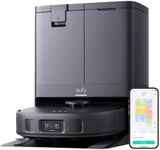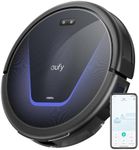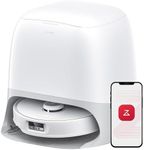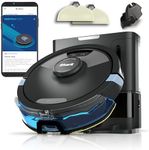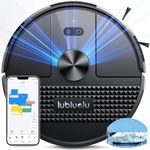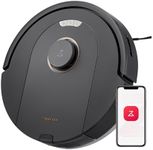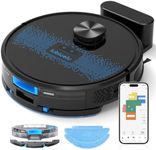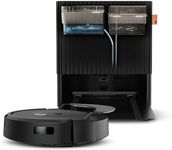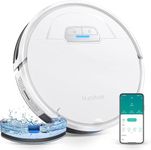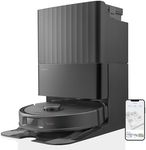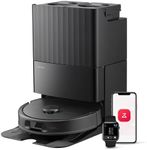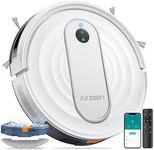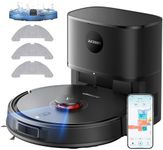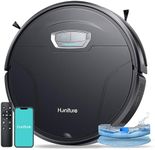Buying Guide for the Best Robot Vacuum For Carpet
Choosing the right robot vacuum for carpet involves understanding the key features and specifications that will ensure efficient and effective cleaning. Carpets can be challenging for robot vacuums due to their texture and the need for strong suction power. Here are the key specifications to consider and how to navigate them to find the best fit for your needs.Suction PowerSuction power is the measure of how strongly the vacuum can pull dirt and debris into its dustbin. This is crucial for carpets because dirt can get embedded deep within the fibers. Suction power is usually measured in Pascals (Pa). For light cleaning on low-pile carpets, a suction power of around 1000-1500 Pa might be sufficient. For medium to high-pile carpets, look for vacuums with 2000 Pa or more. If you have pets or heavy foot traffic, higher suction power will be more effective in keeping your carpets clean.
Brush TypeThe type of brush a robot vacuum uses can significantly impact its performance on carpets. There are generally two types: bristle brushes and rubber brushes. Bristle brushes are good for agitating and lifting dirt from deep within carpet fibers, making them ideal for thicker carpets. Rubber brushes are better at avoiding tangles, especially with pet hair, and are easier to clean. Consider your carpet type and whether you have pets when choosing the brush type.
Navigation TechnologyNavigation technology determines how well the robot vacuum can move around your home and avoid obstacles. Advanced models use laser or camera-based navigation to map your home and clean in systematic patterns, which is more efficient and thorough. Basic models may use random navigation, which can be less effective on larger carpeted areas. If you have a complex layout or large carpeted spaces, opt for a vacuum with advanced navigation technology.
Battery LifeBattery life affects how long the robot vacuum can clean before needing to recharge. This is particularly important for larger homes with extensive carpeted areas. Battery life is usually measured in minutes. For small to medium-sized homes, a battery life of 60-90 minutes may be sufficient. For larger homes, look for models that offer 120 minutes or more. Some models can return to their charging dock and resume cleaning where they left off, which can be a useful feature for larger areas.
Dustbin CapacityDustbin capacity indicates how much dirt and debris the vacuum can hold before it needs to be emptied. Carpets tend to accumulate more dirt, so a larger dustbin can be beneficial. Dustbin capacity is usually measured in liters. For homes with minimal carpet, a smaller dustbin (around 0.4 liters) might be adequate. For homes with extensive carpeting or pets, look for a larger dustbin (0.6 liters or more) to reduce the frequency of emptying.
Height and SizeThe height and size of the robot vacuum determine its ability to navigate under furniture and tight spaces. A lower profile vacuum can easily clean under sofas, beds, and other furniture. Measure the clearance of your furniture and compare it with the height of the robot vacuum. Most robot vacuums are around 3-4 inches tall, but if you have very low furniture, look for models specifically designed to be ultra-thin.
Smart FeaturesSmart features include app control, voice assistant compatibility, and scheduling. These features can enhance convenience and allow you to control the vacuum remotely. If you prefer to manage cleaning tasks while away from home or integrate the vacuum with your smart home system, look for models with robust smart features. Basic models may offer simple scheduling, while advanced models can provide detailed cleaning maps and customization options.
